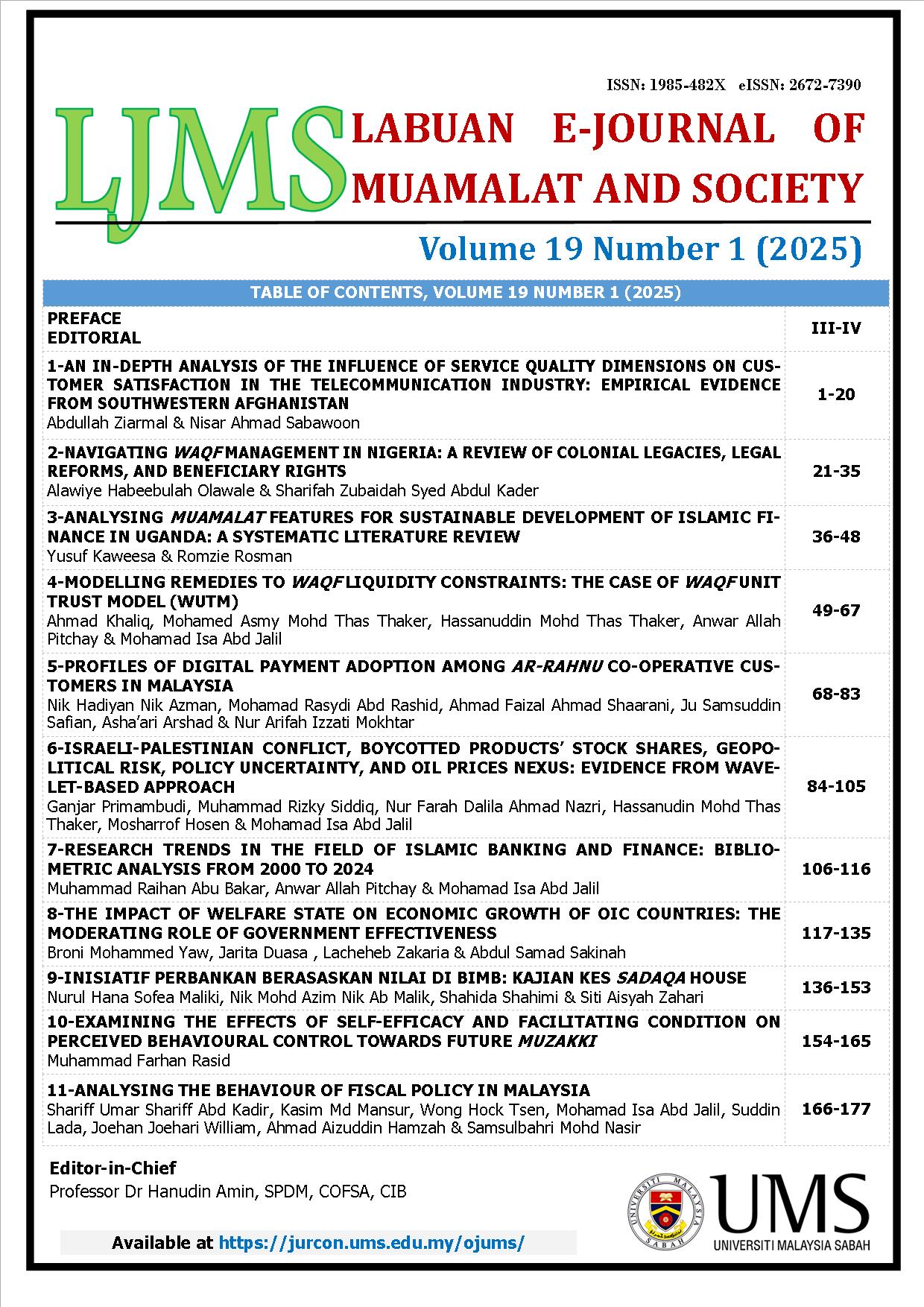ANALYSING THE BEHAVIOUR OF FISCAL POLICY IN MALAYSIA
DOI:
https://doi.org/10.51200/ljms.v19i1.6252Keywords:
Fiscal policy, Fiscal reaction function, OLS, VAR model, MalaysiaAbstract
Malaysia’s fiscal position, as measured by its budget balance, has consistently recorded deficits since the 1997–1998 Asian Financial Crisis. This persistent trend of budgetary shortfalls has contributed to a rising government debt ratio, which has nearly reached the statutory limit. The Fiscal Theory of the Price Level (FTPL) posits that, in the absence of a fiscal policy response to escalating government debt, fiscal policy—rather than monetary policy—can serve as the anchor for price levels. This scenario implies a non-Ricardian fiscal regime. Against this backdrop, this research seeks to examine the behaviour of fiscal policy in Malaysia. The study employs both backward-looking and forward-looking analytical approaches, covering the period from 1980:Q1 to 2023:Q4. The findings indicate that Malaysia’s fiscal policy aligns with a Ricardian regime, wherein an increase in government debt prompts a corresponding rise in the primary surplus. Additionally, the analysis of impulse response functions reveals that a positive shock to the primary surplus results in a reduction in government debt. These outcomes suggest that fiscal policy in Malaysia does indeed respond to changes in government debt, thereby ensuring the sustainability of its fiscal framework.
Downloads
Published
How to Cite
Issue
Section
License
Copyright (c) 2025 Labuan e-Journal of Muamalat and Society (LJMS)

This work is licensed under a Creative Commons Attribution 4.0 International License.











